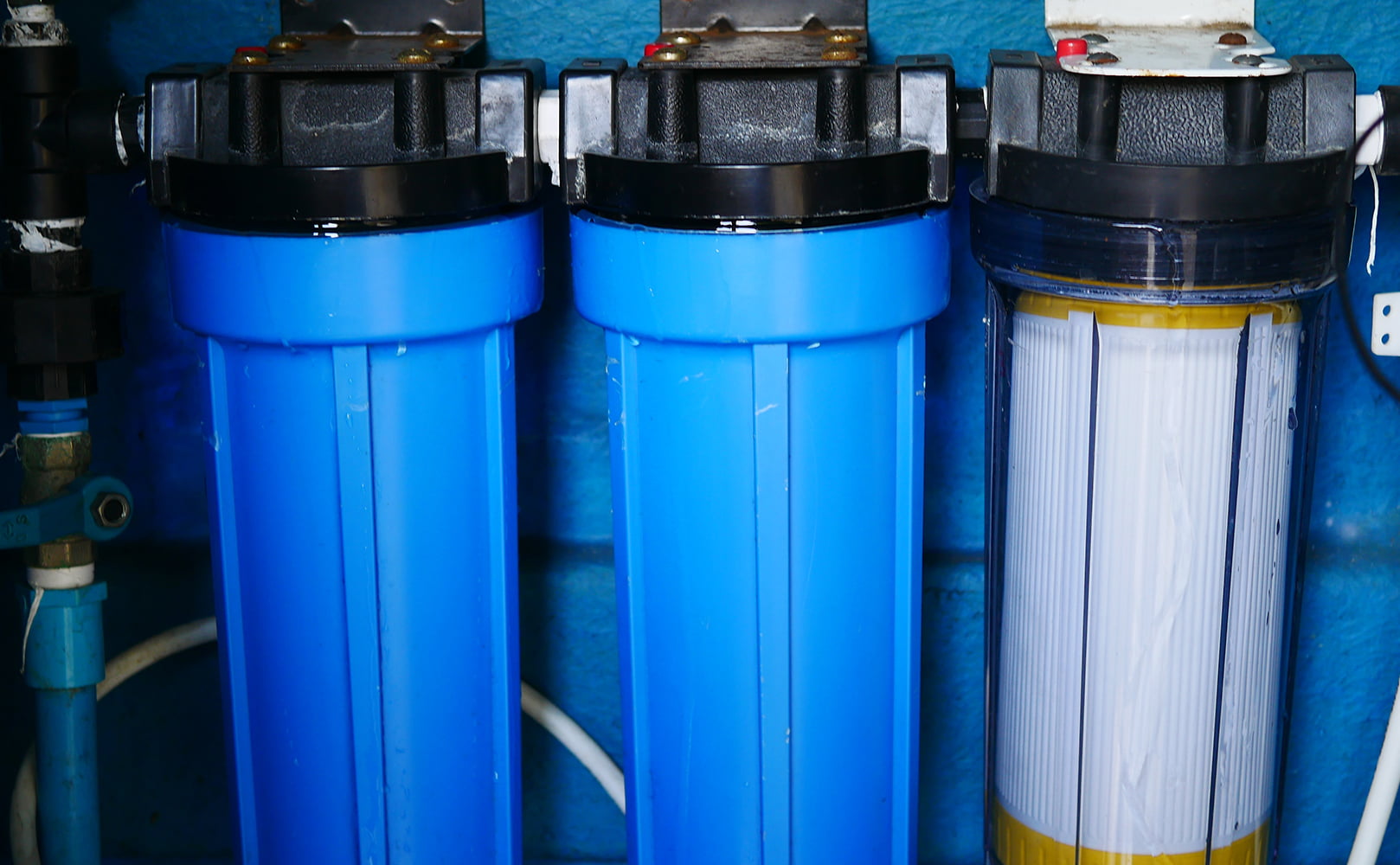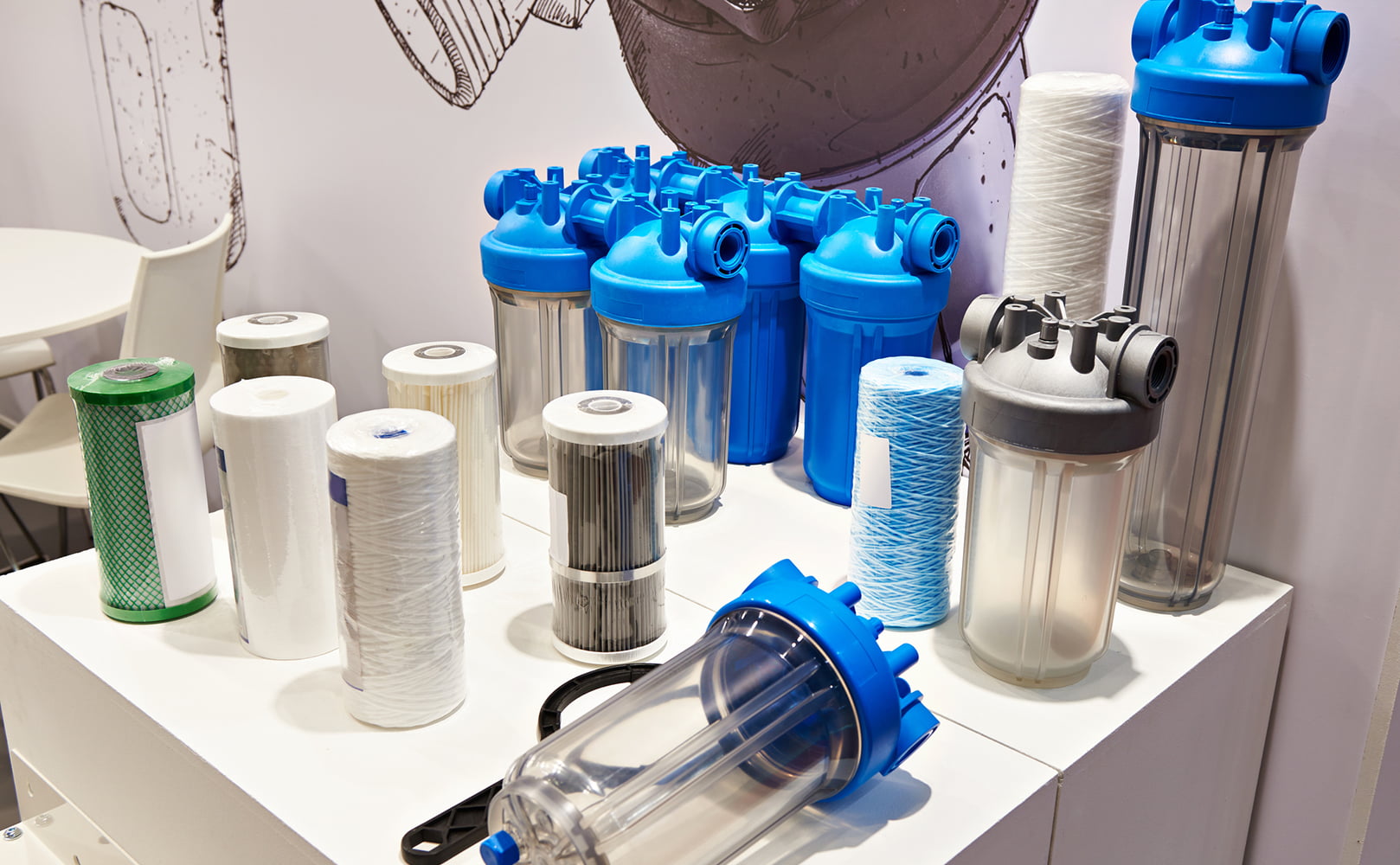Where to Install a Whole House Water Filter? Let’s Find Out!
Written by: Alexandra Uta // Last Updated: Apr 19, 2023
This page may contain affiliate links. If you buy a product or service through such a link we earn a commission at no extra cost to you. Learn more.
Thinking of purchasing a whole house water filter soon?
Before buying, one of the factors you need to consider is where to install it.
In this article, we’ll give you a few tips on where to install your whole house water filter so that it will be most effective.
Key Takeaways
- A whole house water filter is best installed where the main water line enters your home.
- Anywhere near the main shut-off valve is ideal. This will be more convenient when you need to change filters or do other maintenance tasks.
- Install a whole house water filter before the water softener if your water has high levels of sediment or chlorine, and the softener’s required backwashing flow rate is lower than the filter’s output flow rate.
- Most whole house filters should come after the pressure tank.
- It is also advisable to install a whole house water filter indoors to protect it from weather and other conditions.
Choosing the Ideal Location: Where Should a Whole House Water Filter Be Installed?
So, where do you install a whole house water filter?
The first thing you need to check is where the main water line enters your home. That’s where you want to install your whole house water filter in most cases.
Doing so will ensure that all the water entering your home is filtered, giving you and your family clean and safe water to use – at every outlet.
You also need to take into account the size of the whole house filter system you are planning to get. Make sure that there’s enough space around it for proper airflow and maintenance purposes.
Go Near the Main Shut-Off Valve If Possible
Anywhere near the main shut-off valve is ideal, since this will make it easier to shut off the water supply whenever you need to change filters or do any maintenance on the filtration system.
It’s also a good idea to install the whole house water filter upstream of your water heater so that the filter can help protect it from sediment and other impurities.
Before or After Water Softener?
A water softener is a device that is commonly used to remove hardness from water. This is done by exchanging magnesium and calcium ions for sodium ions, which are much more soluble. As a result, this can help improve the quality of your water and make it feel softer.
The answer of whether to install a filtration system before or after a water softener depends on a couple of factors. It is recommended for a whole house water filter to go first when:
- The water quality in your area is bad due to high levels of sediment.
- Your water has elevated levels of chlorine.
- The required water flow rate for backwashing is lower than your filter’s output flow rate.
On the other hand, it is best for water softeners to go first when:
- Your water has low levels of sediment.
- The water flow rate required for backwashing is higher than the filter’s output flow rate.
Before or After the Pressure Tank?
A pressure tank is a device that helps to regulate water pressure in your home. Should it come before or after your filter? The safe answer to this is that a whole house water filter can be installed before AND after a pressure tank. However, one option has more merits.
If you decide to place your whole house water filter before your pressure tank, it will help increase its life, because the filter will be catching all of the sediment and dirt before it enters the tank.
On the other hand, some believe it’s okay to install whole house filters after pressure tanks, since the latter is not really affected by sediment. In any case, this setup can help improve the quality of your water even more because the pressure tank will already have filtered out some of the sediment and dirt before it gets to your whole house water filter.
Indoor vs. Outdoor Installation
In general, it is better to install your system indoors, so that it can be protected from weather and environmental elements. Most warranties do not cover weather damage.
However, if you choose to install it outdoors, make sure your whole house filter is properly weatherproofed. You may need to install weatherproof casings on your system’s components so that they won’t be damaged by sunlight, rain, or frost.
What Is a Whole House Water Filter, and What Does It Do?
A whole house water filter is a type of filtration system that is designed to remove contaminants from your water, making it safer for you to drink and use. Some of the common contaminants that whole house water filters can remove include iron, chlorine, pesticides, and other chemicals.
Types of Whole House Water Filters
There are different types of whole house water filters available, all with different functions. Read on to learn the general functions of some of them.
1. Sediment Filters
These are designed to remove particulate matter from your water, such as rust, dirt, and silt. Sediment filters are typically easy to install and come in different sizes, depending on your needs.
2. Iron, Manganese, and Sulfur Filters
These filters are designed to remove heavy metals and few other elements from your water. They are usually more expensive than sediment filters.
3. Carbon Filters
Carbon filters remove organic contaminants from water, such as chlorine, pesticides, and herbicides. They are also more expensive than sediment filters, since they specialize in removing these types of contaminants.
4. KDF Filters
Kinetic Degradation Fluxion (KDF) filters use a process known as redox to remove contaminants from your water. This type of filter is effective in removing chlorine, iron, and other heavy metals.
5. Ion Exchange Filters
Ion exchange filters are designed to remove inorganic contaminants, such as lead, copper, and fluoride. They typically use the same technology as water softeners.
6. Whole House Reverse Osmosis Systems
Reverse osmosis systems remove both particulate matter and dissolved contaminants from your water, making it the safest option for you and your family. However, they are quite bulky, so make sure you have enough room to install one.
7. UV Systems
UV filters work on removing bacteria and viruses from your water. They use ultraviolet light to kill these organisms, offering the benefit of protecting you from harmful pathogens.
If you have any questions about where to install a whole house water filter please don’t hesitate to leave a comment below!
Information provided on BOS is for educational purposes only. The products and services we review may not be right for your individual circumstances.
We adhere to strict editorial guidelines. Rest assured, the opinions expressed have not been provided, reviewed, or otherwise endorsed by our partners – they are unbiased, independent, and the author’s alone. Our licensed experts fact-check all content for accuracy. It is accurate as of the date posted and to the best of our knowledge.



